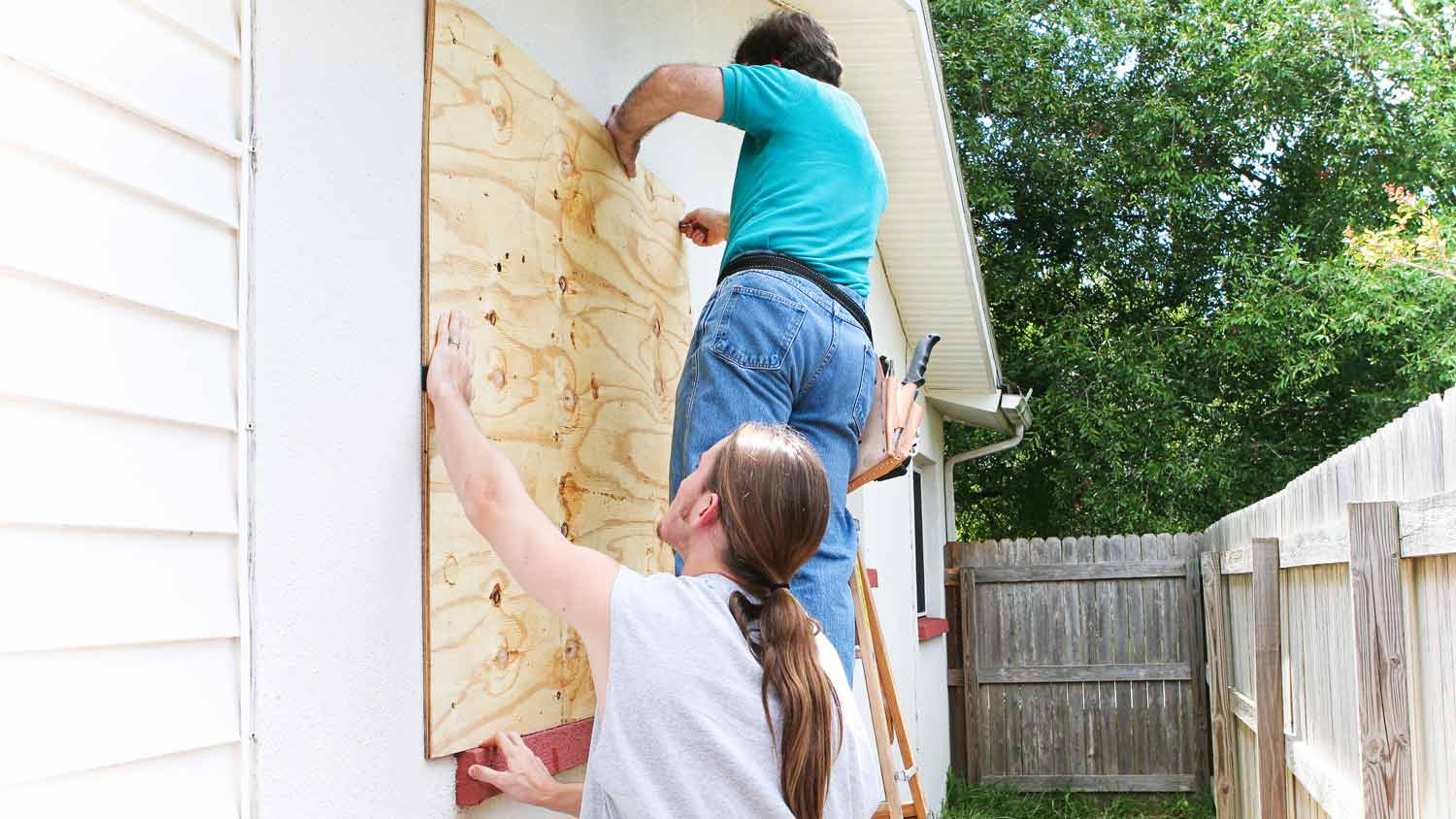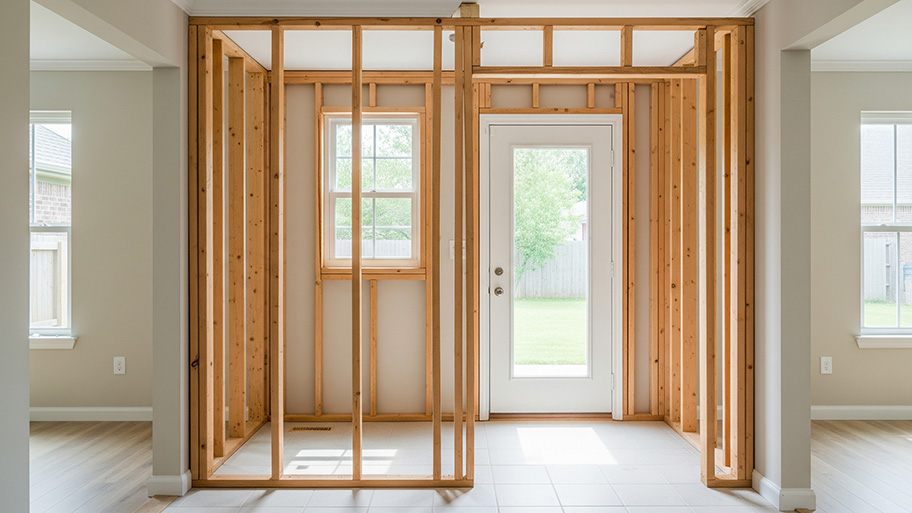
Most building projects and septic installations require soil testing to ensure proper drainage. Learn how much a perc test costs and what affects costs.
Your contractor’s general liability insurance has got your back


You can file an insurance claim against a contractor for property damage or injury caused by their negligence.
The most common route is filing a claim through the contractor’s general liability insurance policy.
You can take several steps to ensure you hire a trustworthy pro who is less likely to cause property damage or injury.
You’re finally checking that long-awaited home improvement project off your to-do list. But your contractor accidentally left your water running and caused water damage to your beautiful hardwood floor. Can you file an insurance claim against a contractor for negligence?
Learn more about the types of claims you can file against a contractor, how to file, and how to hire the right pro for your next home project.
Most states require contractors to carry general liability insurance at a minimum. This insurance policy covers property damage or injury to third parties for which the contractor is found liable.
Contractor general liability insurance covers property damage caused by the contractor. For example, the following situations would warrant you filing a claim with the contractor’s insurance:
Your contractor accidentally knocked a large hole in your wall while installing a new kitchen.
Your contractor installed a plumbing line incorrectly, causing a water leak that damaged your floors, walls, and furniture.
Your contractor accidentally broke a window with their ladder while installing new siding on your home.
General liability insurance also provides coverage for third-party injuries. Some scenarios in which you could file a claim with your contractor’s insurance include:
Your contractor didn’t secure the boards properly when installing a deck, and you fell through the deck and broke your leg.
Your contractor left a ladder unsecured. The ladder fell and hit you on the head, causing a concussion.
Your contractor dropped a tool while fixing your roof, and the tool landed on a passerby and caused injury. The passerby would file a claim with your contractor.
If you think you have just cause to file a claim, there are several steps to follow to start the process.
The first step should be to speak with the contractor about the issue. They may be willing to fix the damage or pay the medical bills out of pocket to avoid filing a claim and increasing their insurance premiums.
But if you decide to proceed with a claim, the contractor will likely need to start the process themselves.
Next, you’ll need to provide the contractor and their insurer with evidence of the damage or injury. Take photos or videos of any damage and estimate the value of the damaged items. If you still have receipts, make copies and include them when filing the claim. Provide copies of medical bills related to any injuries mentioned in the claim.
You may be able to file your claim through your homeowner's insurance policy. If your insurer approves the claim, they may seek to recoup their losses from your contractor’s insurance provider. This process is called subrogation.
Once the claim is approved, you should receive payment fairly quickly. To ensure a speedy payout, stay in touch with the insurer throughout the process so you can help resolve any issues or inconsistencies quickly.
Researching and asking questions is the best way to ensure the contractor you hire is legit. Here are some tips for hiring the best contractor for your project.
Ask whether the contractor has a valid license and verify their license number with your local licensing agency.
Request a Certificate of Insurance (COI) to check the contractor has liability and workers’ compensation insurance coverage.
Request a Certificate of Bonding to check that the contractor has a surety bond.
Read online reviews, check Better Business Bureau (BBB) listings, and contact references to vet the contractor before you hire them.
Request project quotes from at least three contractors before choosing one.
Check the contract for the estimated project timeline, payment terms, and any guarantees or warranties offered.
Ask whether the contractor and crew members will perform the work or whether they will use subcontractors.
they are great and very professional
Great Job on replacing a Shower, great Tile job, Sheetrock a wall, Paint stairwell, Repair stairs with new Treads, Hung a door.
The gentleman that came out, fixed my couch was timely and professional. Great job he saved me tones of money due to if, His price was supper reasonable. Saved me lots of money for not buy a new couch. Highly recommend Skyline creations!
Jay is efficient, detail-oriented, innovative and does remarkable work. He is an excellent communicator and works with his clients to ensure he is mindful of your budget while producing a gorgeous end result. I cannot recommend him highly enough!
When you need something done call Riverview Renovations. Richard will take care of whatever you need. Awesome guy and awesome service! I highly recommend him!
We hired Matt to put in a new paver patio with a trex landing and staircase in our backyard. He did a great job; our space is now usable and looks beautiful. We have gotten so many compliments! He gave us great suggestions when we werenâ t sure exactly what we wanted. He was on time,...
Julio and Alex came when the said they would, worked through the trimming and yard debris removal in just a couple hours, and Juilo's rate was very reasonable!
Joel came when he said he would, demonstrated excellent workmanship in repairing/replacing the steps to my front porch, AND he brought the project in for the amount he had estimated for both materials and labor!
Always easy to work with. Communicate well. Bathroom looks beautiful. I would highly recommend them.
From average costs to expert advice, get all the answers you need to get your job done.

Most building projects and septic installations require soil testing to ensure proper drainage. Learn how much a perc test costs and what affects costs.

Discover storm damage repair costs, key price factors, and ways to save. Get transparent estimates to plan your home repairs with confidence.

Sometimes, all your home needs is a new wall to make a room or provide an updated function to an existing space. Learn how much it costs to install a new wall.

Find out how much a shaftless home elevator costs, including additional factors that can drive up the overall installation price.

Worried about charging too much—or too little—as a general contractor? Learn what factors go into markup, how to calculate it, and how to communicate pricing to customers.

As you ring in the new year, you may wonder: What are the top home improvement ideas of 2026? Read on for a full breakdown of in-demand projects on the horizon.